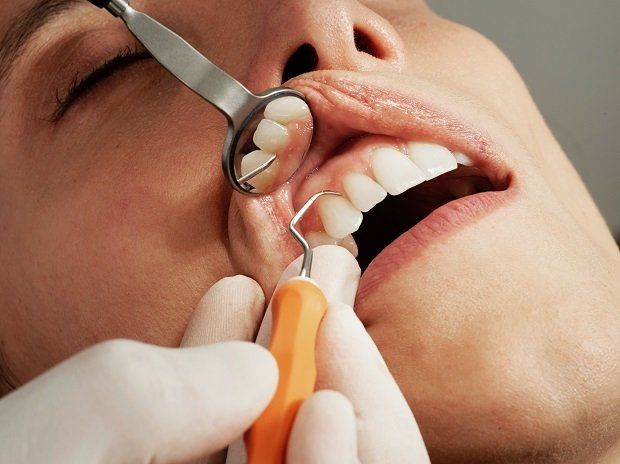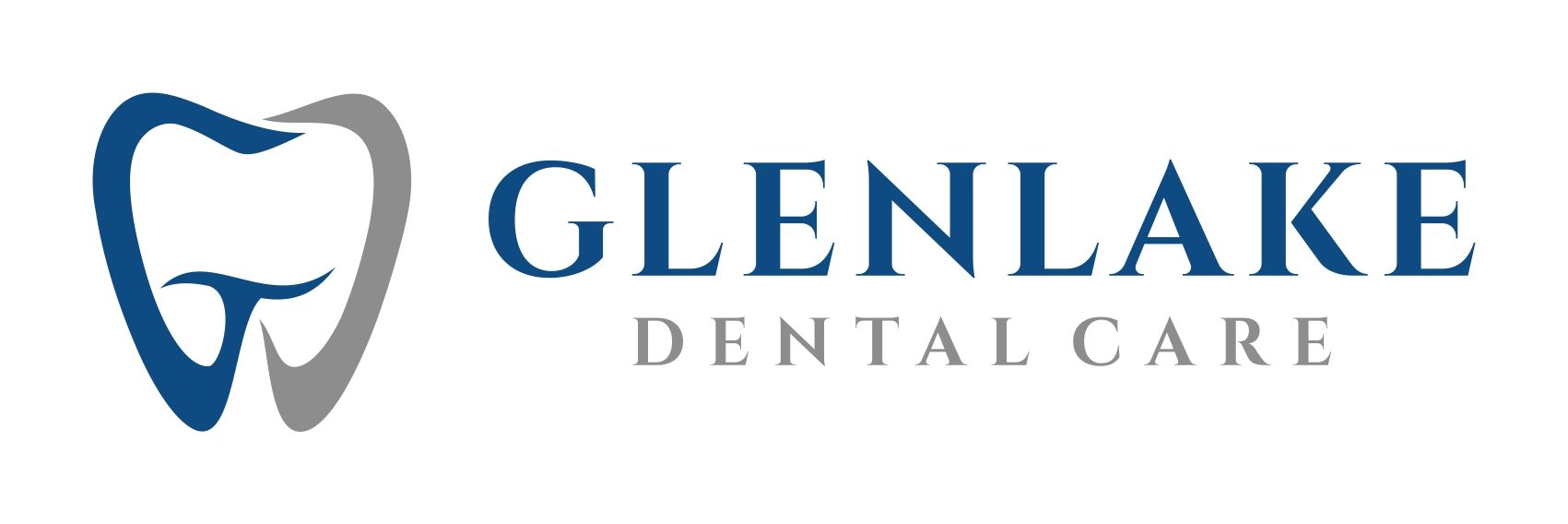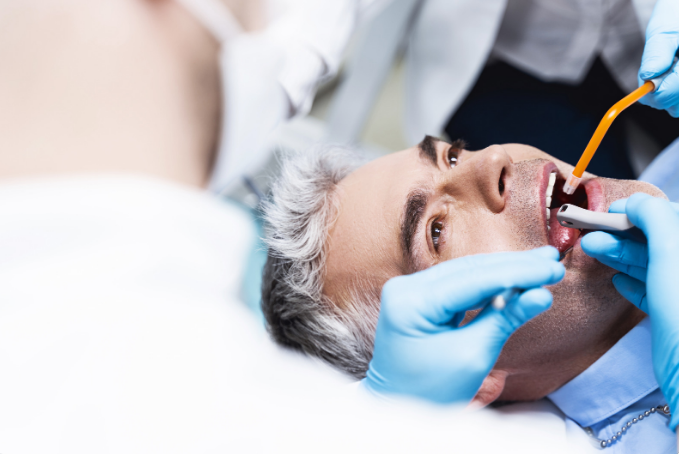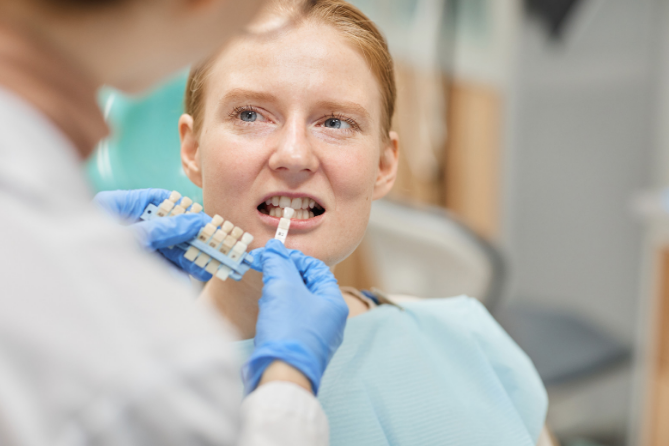How do Dentists Fix Gum Disease?

What is Gum Disease?
Gum disease, periodontitis, is when your teeth are infected. Poor brushing and flossing can cause bacteria to build upon the teeth. If it isn't taken care of, gum disease can lead to sore gums, painful chewing, and even tooth loss.
Our mouths have bacteria and other, smaller things. These bacteria and other things form a sticky film on our teeth that we cannot see. When we brush our teeth, the plaque is removed. If there is not enough brushing or flossing, the plaque can harden to make tartar.
There are a lot of risk factors for gum disease. Smoking is the most significant risk factor. When you smoke, it can make treatment less successful. Other risk factors include diabetes, hormonal changes in girls and women, medications that lessen the flow of saliva, and genetic susceptibility.
Here at Glenlake Dental Care, our dentists make sure to take all the correct measurements in order to properly diagnose and treat your condition. Our Glenview dentists will first review your medical history to see if there is anything that is contributing to your symptoms.
Some symptoms to know that you have gum disease is:
● Bad breath
● Red swollen gums
● Tender or bleeding gums
● Painful chewing
● Sensitive teeth
● Receding gums
● Loose teeth
They will then examine your mouth for plaque and tartar buildup or for bleeding, while measuring the pocket depth. Finally, dental x-rays will be taken to make sure there is no bone loss.
Non-Surgical Treatment
There are many different treatments for gum disease that depend on how far along you are with the disease. The treatments range from non-surgical to surgical to help fix the problem. Some forms of less invasive procedures, if the gum disease has not advanced to far are:
● Scaling
● Root planning
● Antibiotics
● Professional dental cleaning
During a checkup, Glenview dentist will remove the plaque and tartar from above and below the gum line of all teeth. But cleaning is not a cure for this problem. Sometimes a professional dental cleaning will not completely fix the issue and scaling and root planning treatments must be used. This is a deep-cleaning procedure that can be done to your teeth, which removes plaque from above and below the gum line (scaling), and will scrape away plaque on your teeth and smooth out rough spots on the roots of your teeth (planning).
If you have a bacterial infection, it can be treated with topical or oral antibiotics. Topical antibiotics are things like antibiotic mouth rinses or gels that go on the space between your teeth and gums after deep cleaning. Oral antibiotics are needed if the infection is not completely gone.
Surgical Treatments
However, if the gum disease has advanced then dental surgery may be necessary and treatments such as:
● Flap surgery
● Soft tissue grafts
● Bone grafting
● Guided tissue regeneration
● Tissue-stimulating proteins
More advances and invasive measurements must be taken if the disease has progressed. One form of treatment is flap surgery or pocket reduction surgery where the gums are lifted back. Tartar is removed and surfaces of the damaged bone are smoothed to limit areas where disease-causing bacteria can hide. The gums are pushed together with the tissue tightly around the tooth to make it difficult for harmful bacteria to grow.
Done alongside flap surgery, guided tissue regeneration stimulates the bone and gum tissue by inserting a mesh-like fabric between the bone and gum tissue. This helps to protect the area and gives it time to grow so that it can better support the teeth. Another technique is to put a special gel on the root of a tooth that has a disease. The gel has proteins that are also in teeth and makes healthy bone and tissue growth.
Bone grafting is another procedure that uses your own bone, or donated bone, to replace the bone that has been destroyed by gum disease. The grafts serve as a platform for the regrowth of the lost bone. This will restore stability to your teeth and encourage your body to regenerate more quickly. Glenview dentists can also use a soft tissue graft that uses a small amount of tissue from the roof of their mouth (palate) or using tissue from another donor source to have some of the damaged soft tissue reinforced.










